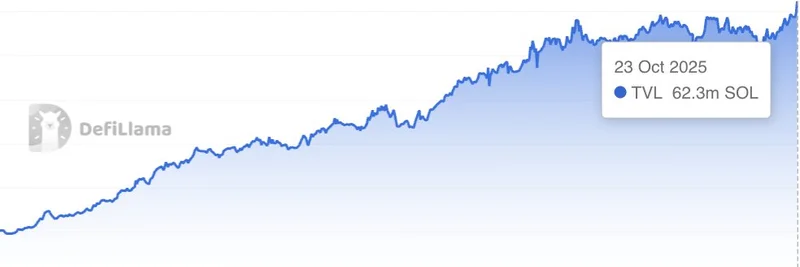In the fast-paced world of crypto, we often hear about the promise of web3: a decentralized future where no single entity holds all the power. But a recent event has thrown a spotlight on how some blockchains aren't living up to that ideal. On October 20, 2025, a major outage at Amazon Web Services (AWS) disrupted services worldwide, including several supposedly decentralized crypto networks. This incident, discussed in a viral thread by crypto commentator MartyParty, serves as a stark reminder to question the foundations of our investments.
The Spark: MartyParty's Eye-Opening Thread
Crypto analyst and music producer MartyParty, known for his sharp takes on macro trends and blockchain tech, kicked off the conversation with this post on X:
Today web2 and blockchains masquerading as web3 have been EXPOSED.
The core design principle of web3 is no single point of failure.
Question your investments today. Wall Street will be evaluating theirs.
His words resonated quickly, garnering thousands of views and sparking replies from the community. One user shared a personal scare with their Sui wallet, suspecting the chain's reliance on AWS nodes. Another noted Ethereum's slowdown, while others debated the true cost of decentralization. It's clear this wasn't just another glitch—it was a wake-up call.
What Happened with the AWS Outage?
For those new to the tech side, AWS is Amazon's cloud computing service, basically a giant online server farm that powers much of the internet. On October 20, an issue in AWS's US-EAST-1 region caused widespread problems, affecting everything from social apps like Snapchat to trading platforms. In crypto, the impact was felt across major players.
According to reports from CryptoSlate, the outage hit exchanges like Coinbase and Robinhood, limiting user access temporarily. More critically, it affected blockchain infrastructure. Infura, a key provider for Ethereum-based apps, reported disruptions that rippled to popular Layer-2 networks such as Polygon, Optimism, Arbitrum, Linea, Base, and Scroll. These L2s are scaling solutions built on Ethereum to make transactions faster and cheaper—think of them as express lanes on a highway.
Ethereum itself didn't grind to a halt, but with about 37% of its nodes (the computers that run the network) hosted on AWS, things slowed down noticeably. And Sui? While not as prominently mentioned in mainstream reports, community discussions and official integrations show that Sui nodes can run on AWS, making it vulnerable too. One reply in the thread described a wallet glitch that resolved after the outage, hinting at underlying centralization.
This event underscores a key irony: many "decentralized" projects rely on centralized cloud providers for efficiency and cost savings. Running your own nodes requires hefty hardware and stable power, so AWS becomes the go-to. But when it fails, so does the illusion of resilience.
Implications for Meme Tokens and Blockchain Practitioners
At Meme Insider, we focus on meme tokens—the fun, community-driven coins that often capture viral moments in crypto. Many popular memes live on these affected chains. For instance, Base (Coinbase's L2) has become a hotspot for meme token launches due to its low fees and easy access. When Base's capacity dipped during the outage, it could have stalled trading, launches, or even simple transfers for tokens like those inspired by internet culture or current events.
Sui, with its fast transactions, is gaining traction for gaming and meme-related projects. If nodes are AWS-dependent, an outage like this could freeze liquidity pools or delay airdrops, hitting retail investors hard.
The bigger picture? This exposes risks in the meme token ecosystem. Meme coins thrive on hype and quick moves, but if the underlying blockchain has a single point of failure, your gains could vanish in a server blip. As MartyParty urges, it's time to evaluate: Is your favorite meme token on a truly decentralized chain, or is it "web3 in name only"?
Experts like Lefteris Karapetsas from Rotkiapp put it bluntly: "The whole vision behind blockchain was decentralized infrastructure, which we have completely failed on." Alternatives like Filecoin or Arweave offer decentralized storage, and their tokens surged post-outage. For meme creators and traders, exploring these could mean more robust projects less prone to centralized breakdowns.
Moving Forward: Prioritizing True Decentralization
This AWS hiccup isn't the end of web3, but it's a lesson in due diligence. As blockchain practitioners, check node distributions—tools like Ethernodes for Ethereum can show provider concentrations. Diversify your holdings across chains with strong decentralization metrics, like those running on independent validators worldwide.
Wall Street, as MartyParty notes, will be watching closely. With more institutional money flowing into crypto, expect pressure for better resilience. For us in the meme space, this could spark innovation: decentralized launchpads or cross-chain memes that aren't tied to one provider.
Stay informed, question everything, and build on solid ground. If you're diving into meme tokens, remember: true web3 means no single point of failure—let's make sure our investments reflect that.



